Have you started making your own solid shampoo and to your dismay you find that your solid shampoo does not harden? On the contrary, it is soft, sometimes even almost liquid! Or, when you use your solid shampoo, it loses its strength and stays soft? Don't panic, you are not the only one to suffer these inconveniences! In this article we will explain to you why your homemade solid shampoo is too soft, and how to harden it. Then in a second time we will see how to use and store your strong shampoo to prevent it from getting soft after using it.
In this section:
Why is your solid shampoo not hardening?
A number of factors can influence the strength of your natural shampoo. We will first see what they are. Then we will see the tips to harden your homemade solid shampoo by acting on these factors.
Reasons for a solid shampoo that is too soft
The solid shampoo should have the same consistency as a conventional hand soap. Yet it happens that once unmolded and dried, the solid shampoo is too soft to be functional. This is due to its particular composition and to a balance between all its components to respect.
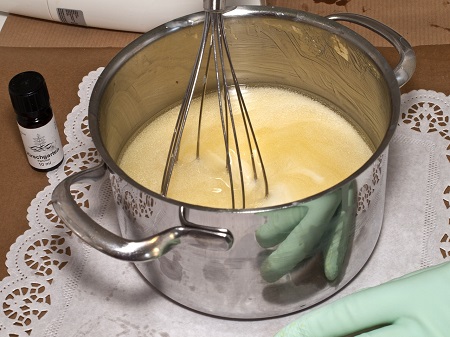
 The particular composition of the solid shampoo acts on its strength
The particular composition of the solid shampoo acts on its strength
Solid shampoos are generally made up of few ingredients and are mostly made from natural products. They are designed to have minimal impact on the environment and on our body. However, their natural composition also explains the fact that it is more difficult to make and use. Thus, if certain ingredients are missing in the recipe, it may be responsible for a shampoo that is too liquid. Here are the ingredients that will act on its strength and prevent it from being too soft:
- Surfactants harden solid shampoo. Indeed the surfactant in a solid shampoo is a very important parameter because it is the main ingredient to solidify your preparation. Therefore, you will need to put in enough. However, if you want to make a solid shampoo without a lot of surfactants there are components that can partially replace it. We will see below, that the choice of surfactants is essential to get to harden your solid shampoo but that there are also the ingredients that allow you to replace it if you do not want to use a lot of it.
- Vegetable butters keep your solid shampoo from getting too soft because they have a naturally solid composition.
- Natural minerals help to harden solid shampoo because they dry out when not in contact with water.
These ingredients will therefore allow your solid shampoo not to be too soft. You will also have to respect a balance between all these ingredients in order to get your shampoo to harden properly.
 A dosage of the ingredients to be respected in the solid shampoo recipe so that it stays hard
A dosage of the ingredients to be respected in the solid shampoo recipe so that it stays hard
The proportions of these ingredients are important elements to take into account during its manufacture. here are the dosages to be respected if you want your solid shampoo is not too soft. (These may vary depending on the recipe but be careful that an ingredient is not enormously under or over dosed) :
- Surfactant (between 30% and 80%). Below 30% it is very difficult to keep a solid texture, although there are means as we will see below.
- Oily phase or vegetable butter between 10 and 20%.
- Mineral or vegetable powder (about 15-30%).
- Aqueous phase (maximum 15-20%).
- Essential oil (between 1 and 2%) and optional.
The use of the right ingredients and the right balance in their dosage will therefore allow the solid shampoo not to be too soft.. We will see together, what are the specific solutions to make it hard.
How to harden a homemade solid shampoo?
Several solutions exist to harden your solid shampoo. Depending on the ingredients you use in your preparation, find among all of these tips the ones that you think are insightful to complete your solid shampoo recipe and prevent it from getting too soft:
 If you want to discover another recipe for make your own solid shampoo, discover in our article a complete guide on the subject. 5 recipes are available and they should allow you to maintain a good texture and solidity of your shampoo.
If you want to discover another recipe for make your own solid shampoo, discover in our article a complete guide on the subject. 5 recipes are available and they should allow you to maintain a good texture and solidity of your shampoo.
- Use the right surfactants. Choosing the washing base for your solid shampoo is very important for several reasons: The surfactant can be more or less irritating. It can wash more or less well. Finally, it can more or less allow the solidity of your solid shampoo and prevent it from founding. To help you make a choice, here are the main surfactants present in shampoos and their characteristics:
 Among the surfactants that contain sulfate, the best known are Sodium Lauryl Sulfate (SLS), and Sodium Laureth Sulfate (SLES). These are the washing bases that are found in conventional liquid shampoos. They wash very well, but they are strippers and irritants. These are chemicals and in no case we recommend them to make up your solid shampoos.
Among the surfactants that contain sulfate, the best known are Sodium Lauryl Sulfate (SLS), and Sodium Laureth Sulfate (SLES). These are the washing bases that are found in conventional liquid shampoos. They wash very well, but they are strippers and irritants. These are chemicals and in no case we recommend them to make up your solid shampoos.
 Among the mildly irritating surfactants: Sodium Cocoyl Sulfate (SCS) or Sodium Lauryl Sulfoacetate (SLSA). These bases come from the fatty acids of coconut oil, they are called “gentle” on the skin but they are very concentrated and contain a little sulfate, which can, for some, be itchy. The advantages are that they allow both to clean the hair very well and also to solidify solid shampoo. It is interesting to use them in addition to a very mild surfactant, without any sulfates.
Among the mildly irritating surfactants: Sodium Cocoyl Sulfate (SCS) or Sodium Lauryl Sulfoacetate (SLSA). These bases come from the fatty acids of coconut oil, they are called “gentle” on the skin but they are very concentrated and contain a little sulfate, which can, for some, be itchy. The advantages are that they allow both to clean the hair very well and also to solidify solid shampoo. It is interesting to use them in addition to a very mild surfactant, without any sulfates.
 The SCI surfactant -Sodium cocoyl isethionate- is a surfactant derived from coconut oil, presented in the form of a granulated powder. It is very gentle on the skin and is absolutely not harsh on the hair. The disadvantage of this is that it foams less well because it is less concentrated and it does not allow the solid shampoo to harden well. If you only use this surfactant it may be responsible for a solid shampoo that is too soft.
The SCI surfactant -Sodium cocoyl isethionate- is a surfactant derived from coconut oil, presented in the form of a granulated powder. It is very gentle on the skin and is absolutely not harsh on the hair. The disadvantage of this is that it foams less well because it is less concentrated and it does not allow the solid shampoo to harden well. If you only use this surfactant it may be responsible for a solid shampoo that is too soft.
To conclude: To formulate soft solid shampoos well tolerated by the hair, while bringing solid shampoo strength it is strongly advised to use thecombination of mild surfactants such as SCS or SLSA with a very mild surfactant such as SCI, or sodium lauryl methyl isethionate (SLMI). The combination we recommend to prevent your solid shampoo from being too runny is: SCS + SCI.

- Let your solid shampoo harden well. First, let it harden for 2 hours in its mold at room temperature so that it takes the shape you want. Once hardened, unmold it, then let it dry for at least 48 hours at room temperature. The ideal is to wait 5 days to allow enough time for the water to evaporate.
- Increase the surfactant dose of the solid shampoo to prevent it from getting too soft. Even if you want to use the least amount of surfactant, unfortunately it is sometimes necessary to add some in order for your solid shampoo to harden. A solid shampoo will have a hard time solidifying below 40% surfactant in the preparation. If this is your case, add SCS, the mild surfactant that helps harden your shampoo.
If you want to shampoo only with SCI, add a powder (shikakai or rhassoul for example) or stearic acid which will help to hold your shampoo and prevent it from becoming soft and melting. (See tips below).
- Add stearic acid or cetyl alcohol so that your solid shampoo is a more solid composition. If you don't want to add more surfactant to your preparation, you can add one of these two co-emulsifiers to help solidify your shampoo and prevent it from getting too soft.
 Stearic acid is a fatty acid naturally present in vegetable butters. It is used to harden solid soaps and shampoos. It is in principle used in your recipe up to 2 to 6%. The fusion takes place between 55 and 65 degrees. It should therefore be added to your preparation at the time of the water bath.
Stearic acid is a fatty acid naturally present in vegetable butters. It is used to harden solid soaps and shampoos. It is in principle used in your recipe up to 2 to 6%. The fusion takes place between 55 and 65 degrees. It should therefore be added to your preparation at the time of the water bath.
 Cetyl alcohol is a co-emulsifier made from fatty alcohol derived from vegetable fatty acids. It is used as a consistency agent to stabilize the emulsions of your solid shampoo and to modulate their texture. Thus it thickens your solid shampoo while providing a smooth feel. In principle, it is used at 2 to 5%. Also be aware that it melts at a temperature of 50 degrees.
Cetyl alcohol is a co-emulsifier made from fatty alcohol derived from vegetable fatty acids. It is used as a consistency agent to stabilize the emulsions of your solid shampoo and to modulate their texture. Thus it thickens your solid shampoo while providing a smooth feel. In principle, it is used at 2 to 5%. Also be aware that it melts at a temperature of 50 degrees.
It is more recommended to use stearic acid to harden solid shampoo. But cetyl alcohol can also be a good supplement in your preparation to thicken it and therefore prevent it from being soft and melting. Use either one or the other as they are both co-emulsifiers and therefore have a similar role. The use of an asset is enough.
- Add vegetable butters to your preparation. Among the best known are cocoa butter or shea butter. They have a naturally solid consistency when dry and at room temperature. They allow the solid shampoo to keep its firmness after use and prevent it from becoming too runny.
- Add powders to your recipe to prevent your solid shampoo from getting too soft. If you do not want to add more surfactant, you can increase the dosage of vegetable, mineral or Ayurvedic powders in your preparation: Natural clay, Nettle, Rhassoul, Neutral henna, Shikakaï, Reetha, Sidr, Bhringaraj ... They will allow, while cleaning your hair, to harden your solid shampoo thanks to their naturally dry and solid composition. Be careful to take a powder suited to your type of hair (fine, oily, dry, thick, etc.).
- Reduce vegetable oils to harden your shampoo. Solid shampoo is usually made from vegetable oils that have a liquid consistency. If you do not wish to increase the dosage of surfactant, and in particular if you shampoo with only SCI, you can reduce the vegetable oil and replace it with a hard butter (cocoa, shea, mango, kokum, sal…). Butters have moisturizing and nutritional properties like oils, but they have a solid composition. They will prevent your solid shampoo from being too runny in consistency.
- Decrease the aqueous solution present in your solid shampoo. Add only between 5 and 10% aqueous solution in your recipe. The purpose of water is to melt the surfactants. It then evaporates during drying. It is therefore not necessary to add too much, because the water will have more difficulty evaporating and it will therefore participate in making the solid shampoo softer. If you have opted for the “SLS” surfactant, know that it naturally contains water so no need to add too much, only 5% aqueous solution is sufficient.
How to use and store your solid shampoo to keep it tough
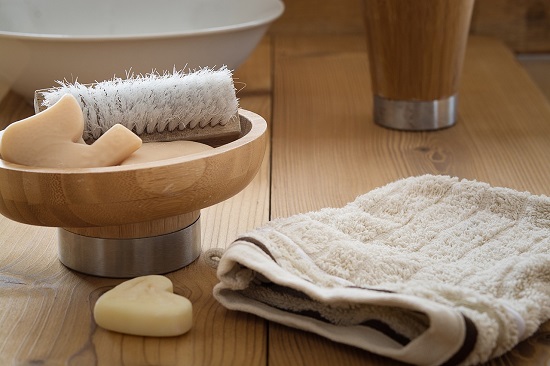
Whether you bought your solid shampoo from a brand, or decided to make it yourself, the same problem can arise: your solid shampoo after several uses does not regain its firm and solid structure. On the contrary, he stays soft and even, it becomes almost liquid. In these cases, if this problem is not related to a manufacturing concern as seen in the first part, it is often related to the use and the method of conservation of your solid shampoo which are not the good.
How to properly use your solid shampoo to prevent it from melting
The solid shampoo is used as a hand soap. Once you have wet your hands, lather your solid shampoo in them, and apply the product gently on your scalp. Use careful circular motions and leave for a few minutes if possible. Do not rub your lengths and ends at the risk of damaging them. They will be washed at the time of rinsing, by running shampoo on them. Rinse thoroughly to prevent the product from sticking to the scalp and hair. If you want to know more about the right techniques to adopt to rinse your solid shampoo, it's here!
What not to do when using your solid shampoo, under penalty of make it too soft by damaging its structure :
- Do not apply the shampoo roller directly to your scalp and hair. You run the risk of using too much product and destroying the shape of your solid shampoo while irritating your scalp.
- Do not break down your solid shampoo by applying it improperly. Apply the foam of solid shampoo, not pieces of it on the hair.
- Do not shampoo several times in a row. A single wash is enough to clean your hair and get rid of impurities from your scalp.
- If despite all your efforts your solid shampoo remains too soft, you can always recycle it. Collect your solid shampoo, and melt it again, adding the ingredients that will allow you to solidify it. Over very low heat, mix a little water, shampoo and new ingredients. Once everything has melted, remove the homogeneous paste from the heat and let dry in a mold for about 2 hours. Remove it from the mold and let it dry for at least 48 hours.
How to store your solid shampoo to prevent it from becoming too soft
It couldn't be simpler: let your solid shampoo dry!
Moisture is the first enemy of a bar shampoo. In fact, it does not contain a preservative, and contact with water will therefore initially encourage the proliferation of bacteria, and secondly modify its structure and its solidity. To prevent your solid shampoo from remaining soft, you must therefore take care to keep it away from moisture.. For it adopt a good storage method. You can put it on a soap dish, in a box, in a dish or in a hanging net. In any case, the golden rule to keep it is to keep it dry as soon as you have finished using it. Make sure there is no recurring splash on it, or leave it in a room that is constantly humid.
In short, do well pay attention to the environment of your solid shampoo to prevent it from remaining soft after you have used it!


 The particular composition of the solid shampoo acts on its strength
The particular composition of the solid shampoo acts on its strength 
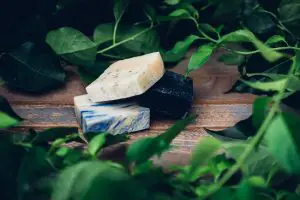
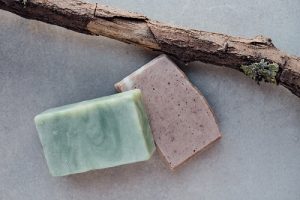
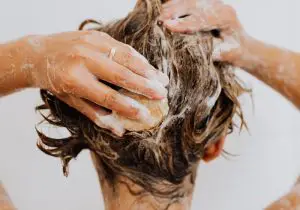

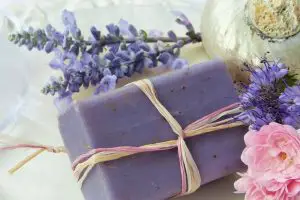
Me parece un articulo muy interesante. Estaba buscando un champú con ácido este arico is that el champú comercial that uso tiene como ingredientes in 2ª pocision el agua y el 3º el ácido este arico y no entente el porqué there is only a curso donde el agua era a 10%. Ahora sees me at leer el artículo con las recetas de champús, to see if inspired me y entiendo mejor la formula del Champú that understands. Gracias
Thank you for your comment. Hope you have found the right formula for your shampoo! 🙂
Thanks for your advice, I was able to solidify my shampoo
Thank you for your comment and glad you were able to achieve the consistency you wanted for your shampoo 🙂